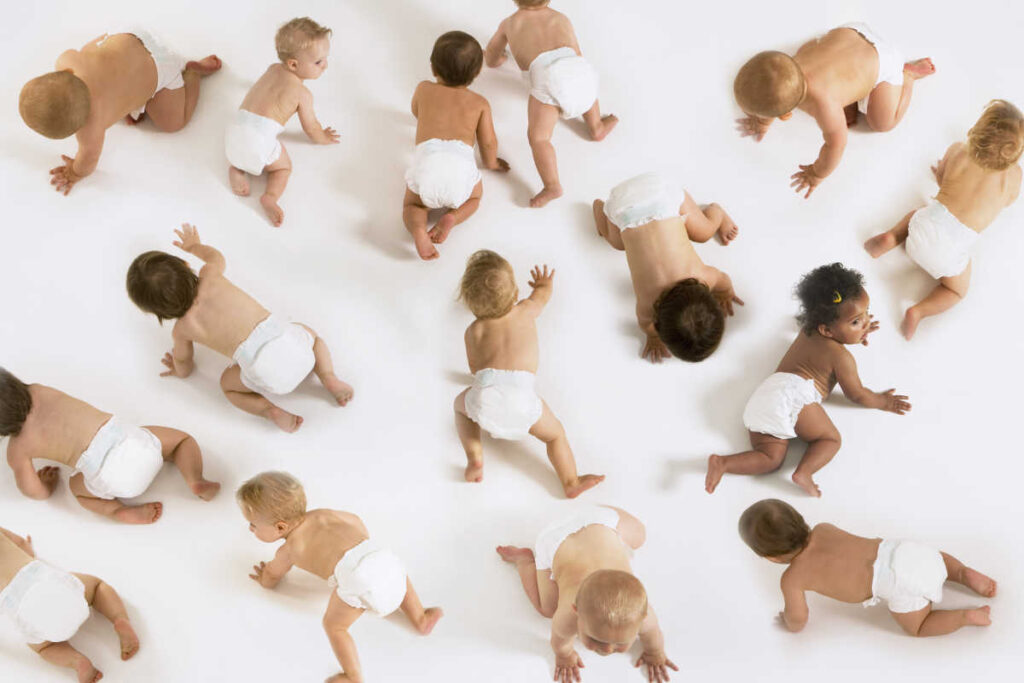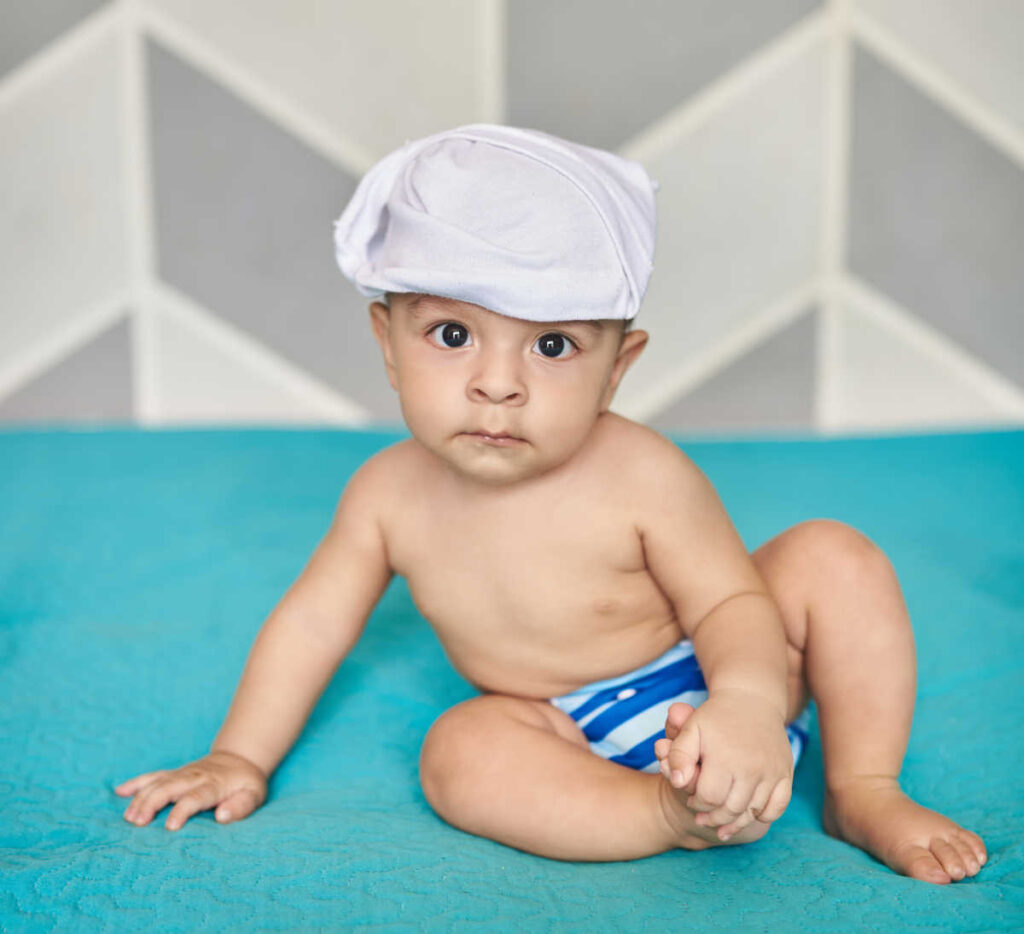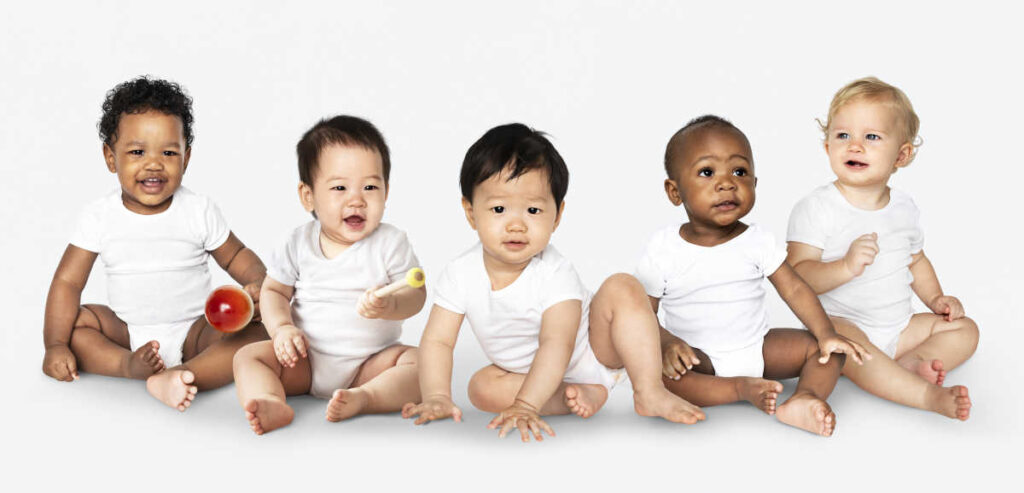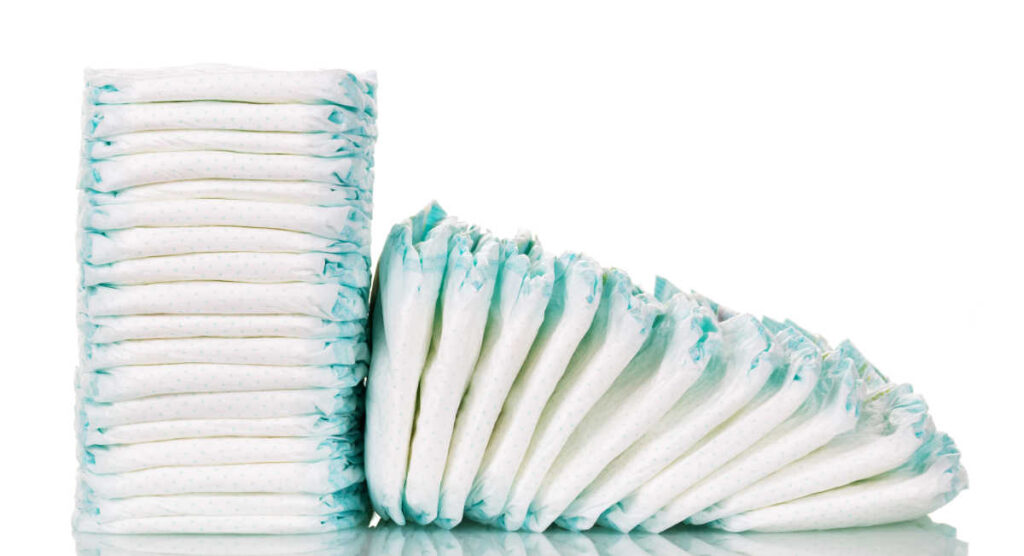Diapers: Everything Moms Need To Know

So maybe you’re not planning on potty-training your little ones from birth and embracing that diaper-free life like this one mom, but wouldn’t it be nice? That’s the dream, right? To have a baby who knows how to do everything on her own! We’d save so much time and money!
But seriously, for 99% of moms, the diaper phase of babyhood is standard. New parents will probably change about 10 diapers a day! While it may be intimidating and complicated at first, you’ll get the hang of it while keeping your baby clean and dry.
From diaper changing essentials to cloth vs. disposable diapers to diaper rashes, let’s dive in and break down everything moms need to know about diapers.

Once the deed is done by your baby and he has either a wet or poopy diaper, it’s best to get the diaper off as soon as possible. You don’t want to have that lingering smell, but you especially don’t want to put your child at risk of a diaper rash or urinary tract infection.
Baby wipes are a convenient way to clean up messes, but it’s advised that you don’t use them for the youngest of babies. Some baby wipes contain ingredients that can trigger allergic reactions for babies with sensitive skin. It’s probably fine to use them right away, but many doctors recommend playing it safe and waiting until your baby’s at least 1 month old. Until then, use one of those tiny, super-soft washcloths you probably received for your baby shower and plain old water. Mom tip: Babies also don’t need to be bathed daily.

Diaper Changing Essentials
A diaper station is where you’ll usually be changing her diaper at home, so it should be conveniently stocked with all the items necessary for clean-up at hand. Similarly, have travel sizes of these products in the diaper bag for when you’re out and about.
Clean diapers: Have a few spares handy when you’re changing diapers.
Clean cotton balls, washcloths or wipes: As we mentioned above, for babies under a month old and those with diaper rash, use warm water and a cotton ball or soft cloth to clean the baby off. You can also use a washcloth for drying (or hypoallergenic wipes for newborns without diaper rash to start, if you prefer). For older infants, use pre-moistened wipes — hypoallergenic and free of fragrance and alcohol.
A change of clothes: For leaks and blowouts!
Waterproof pants: Buy those nylon cover-up pants if you’re using traditional cloth diapers.
Ointment to prevent and/or soothe diaper rash: Protect and soothe with an ointment specifically made to create a barrier between that tender bottom and skin-irritating pee and poop. There’s no need for lotions, baby oil, or powder, which can cause further irritation. Reminder: you can’t use many diaper rash creams and ointments with cloth diapers.
A loving touch … and a distraction: A gentle voice and touch will do wonders for your baby especially if your little one doesn’t love the diaper-changing process. Keep a favorite toy at hand to distract a squirmy baby. Parents: Make sure to wash and dry your hands when it’s all done!

Cloth Diapers
Over a decade ago when my daughter was a newborn, cloth diapers were still considered old-fashioned and impractical. Few parents used them, but they were still on the radar as an option. It didn’t take long before cloth diapers — usually made of cotton, terry cloth, or flannel — became more popular and a favorite among moms looking to use products that are gentler on sensitive baby skin, environmentally friendly, as well as cost-effective. Cloth diapers have come a long way, and the modern versions are high-quality, adjustable, and even come in cute fabrics and patterns!
Traditional cloth diapers are pre-folded or in a square — both require pinning. If the thought of pricking your baby or the pin coming loose at any moment concerns you, look for diaper tape that’s pretty readily available online. The modern cloth diapers are fitted or contoured like disposable diapers, and come with Velcro closures or snaps. There are also modern accessories to make cloth diapering easier like absorbent liners and diaper covers to help prevent leaks. Still, cloth diapers are less absorbent and more likely to leak.
Once your baby has wet her cloth diaper, you can toss it into a diaper pail. It’s a good idea to have a separate pail for the cloth diaper laundry because you’ll probably need to wash this load of cloth diapers more often than the regular baby laundry. Also, use a very mild detergent for the cloth diapers to avoid irritation. Poop diapers should be emptied into the toilet first then rinsed with water before washing in the machine. This will cut down on stains and odors. Cloth diapers mean many loads of laundry, and higher water and electricity bills, so take that into consideration when weighing the diaper options.

Disposable Diapers
Disposable diapers are probably the version you’re more accustomed to hearing about and seeing in stores. They’re more breathable and absorbent than cloth diapers. While there are many varieties to choose from, you’ll want to look for a brand that fits best with your baby and his needs — u-shape umbilical cord care for newborns, eco-friendly, organic, sensitive-skin, crawlers, among others — and your price range. Then it’s all about getting the right size — there are definitely more size options with disposable diapers. The diapers will be labeled with sizes that vary from brand to brand, so it’s best to go by your baby’s weight (read more about this below).
Disposable diapers are sealed with adhesive strips and usually once you have attached them, you can carefully undo them to check to see if it’s soiled by your baby (if you can’t already smell it!), and then reattach the adhesive if it’s still clean.
Because they’re disposable diapers, parents love the convenience of being able to toss after each use. This factor also makes these diapers not the greatest for the environment. When disposing of these diapers there’s really no need for an expensive diaper pail, but again, keeping these soiled diapers in a separate garbage pail is most sanitary.
According to Pampers.com, there are a few tips to ensure your baby’s diaper is the perfect fit. After the diaper is fastened, the waistband should sit just under your baby’s belly button and you should be able to fit two fingers under the waistband. “This means the diaper is fitted properly — not too snug, not too loose.” Also, there should be no gaps around the legs.
Once the diaper is on, run two fingers just inside the leg cuffs to get them in the proper position to help prevent leaks and blowouts. When you take the diaper off, if you’re seeing red marks on your little one’s skin, that’s a sign that you’re securing the diaper too tightly or it might be time to go up to the next size diaper. Disposable diapers that are too tight can cause rashes, and you should also be aware that your child could be sensitive to the dyes and gels in certain brands of disposable diapers.

Diaper Sizing
Disposable diaper sizes vary by manufacturer, so here’s a guide to a few of the more popular diaper brands:
Pampers Diaper Sizes
Preemie: 6 lbs. and under (only available in Pampers Swaddlers)
Newborn: 10 lbs. and under
Size 1: 8- 14 lbs.
Size 2: 12-18 lbs.
Size 3: 16-28 lbs.
Size 4: 22-37 lbs.
Size 5: 27 lbs. and over
Size 6: 35 lbs. and over
Size 7: 41 lbs. and over (Only available in certain styles, like Pampers Cruisers and Pampers Swaddlers)
The Honest Company Diaper Sizes
Newborn: 10 lbs. and under
Size 1: 8-14 lbs.
Size 2: 12-18 lbs.
Size 3: 16-28 lbs.
Size 4: 22-37 lbs.
Size 5: 27 lbs. and over
Size 6: 35 lbs. and over
Huggies Diaper Sizes
Preemie: 6 lbs. and under (only available in Little Snugglers)
Newborn: 10 lbs. and under
Size 1: 14 lbs. and under
Size 2: 12-18 lbs.
Size 3: 16-28 lbs.
Size 4: 22-37 lbs.
Size 5: 37 lbs. and over
Size 6: 35 lbs. and over
Luvs Diaper Sizes
Newborn: 10 lbs. and under
Size 1: 8-14 lbs.
Size 2: 12-18 lbs.
Size 3: 16-28 lbs.
Size 4: 22-37 lbs.
Size 5: 27 lbs. and over
Size 6: 35 lbs. and over

Costs
The average baby goes through eight to 12 diapers a day, according to the National Diaper Bank Network. This can set you back $80 or more per month, or about $1,000 a year on disposable diapers. Being unable to afford diapers has been a source of postpartum depression for many mothers, for many years. It’s important that moms who can afford this help support those mothers who may be struggling with this serious issue. Cloth diapers and accessories will run you about $300 a year if you wash them yourself.